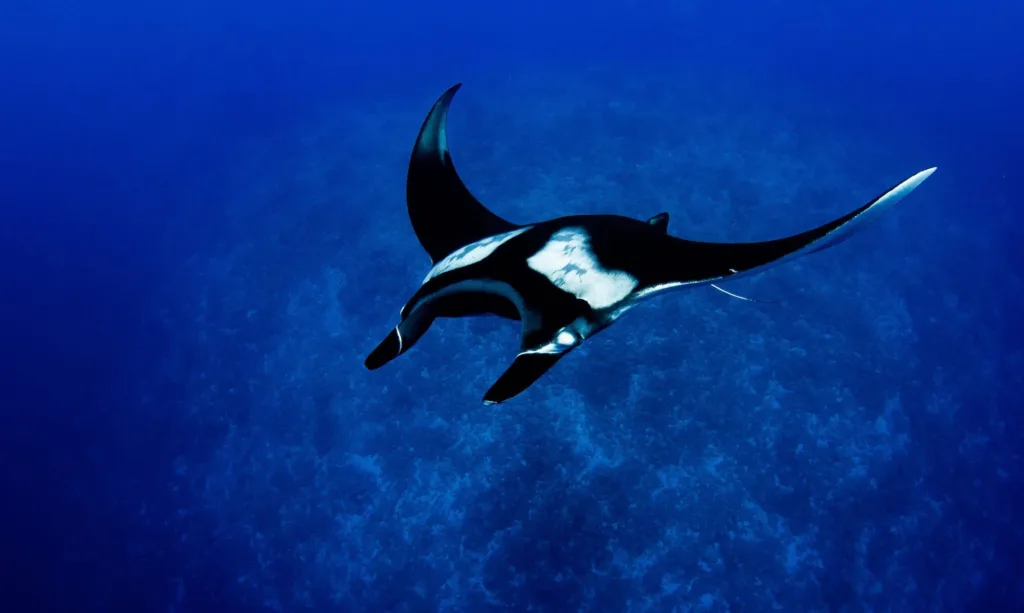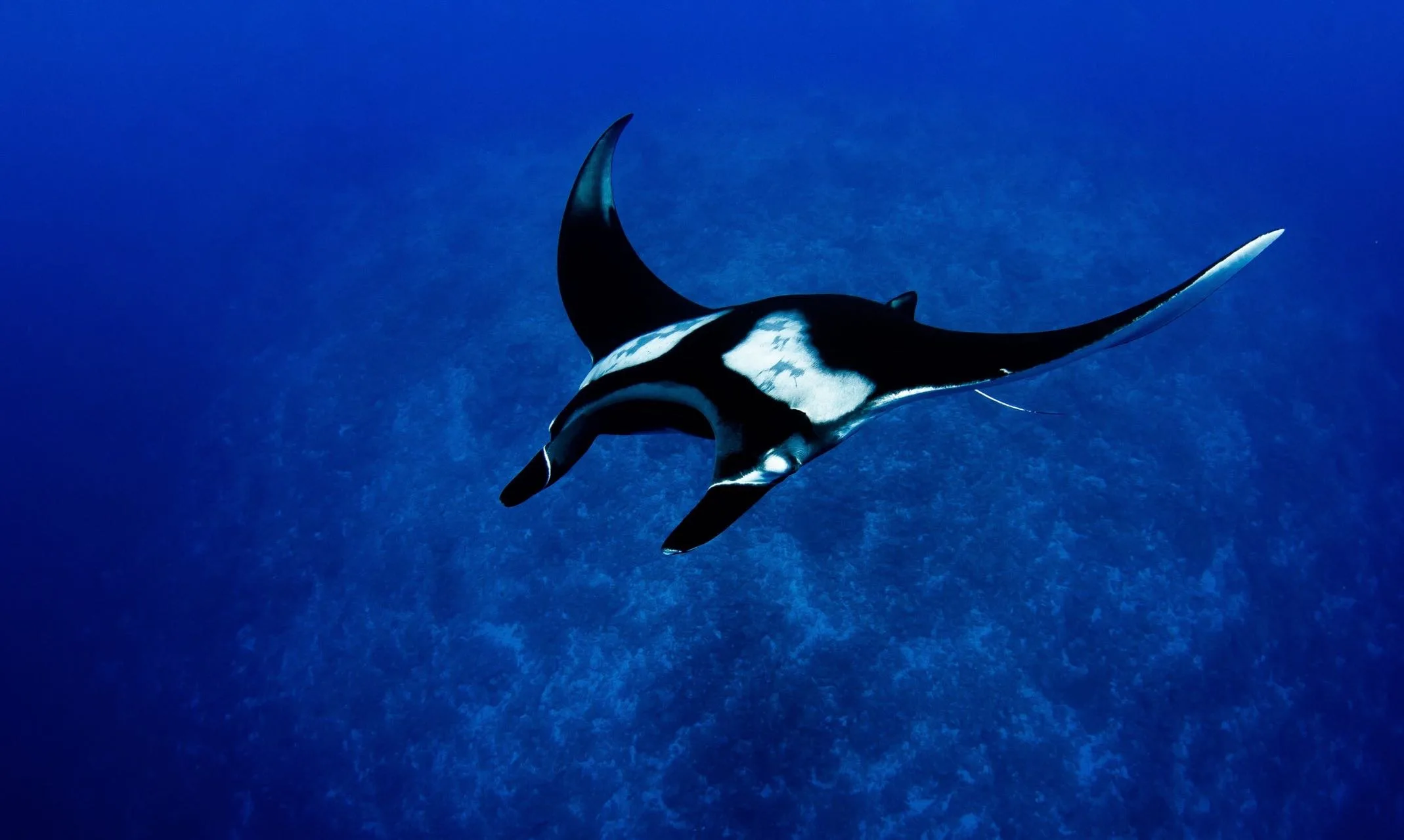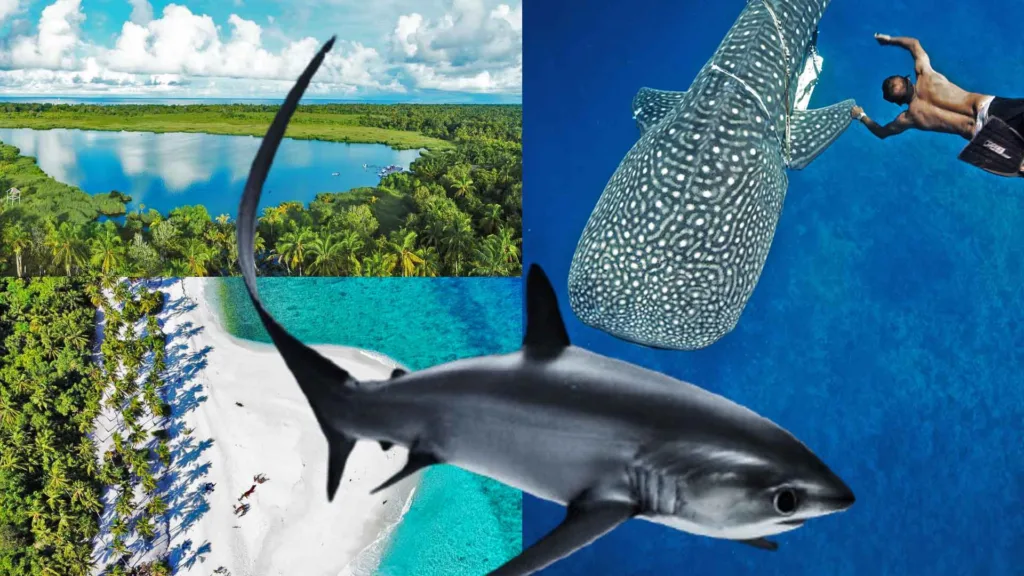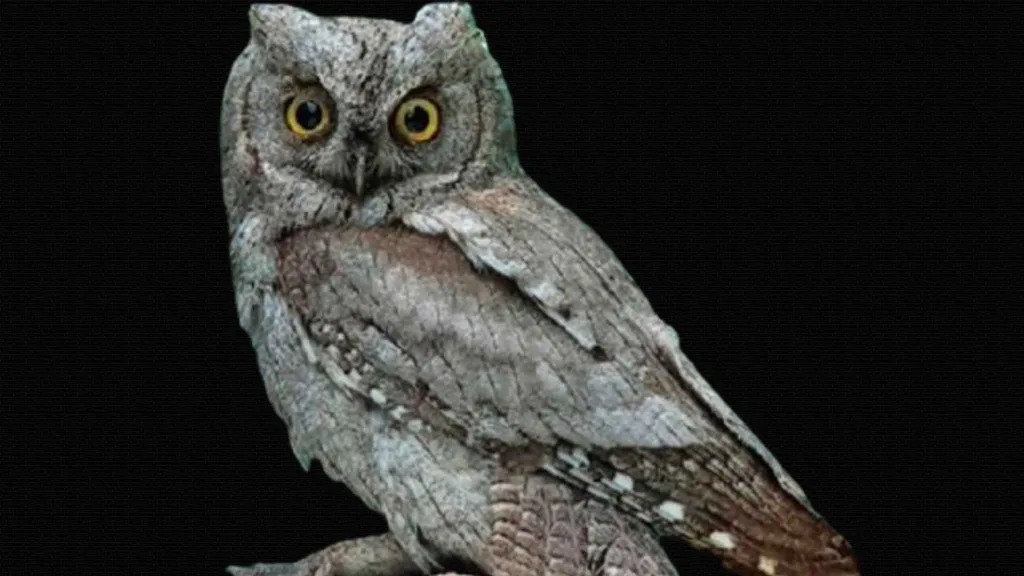
The vibrant colours of the organisms and large predators that inhabit the marine underwater world continue to amaze us. We are fascinated by their beauty, extraordinary appearance, and behaviour. However, we know very little about how they forage, move, and dive into the breathtakingly deep blue ocean. Scientists recently discovered the fascinating behaviour of oceanic manta rays. They dive extremely deep.
With their extreme diving depths, the first thing that came to mind was Fuvahmulah, where these deep-sea giants live. Around 30 years ago, we saw an oceanic manta ray at a depth of approximately 1.5 metres on the beach of Thoondu on our island, Fuvahmulah. Scientists have discovered that they dive more than 1200 meters.
A team of international scientists conducted a study of oceanic manta rays. The tagged 24 giant mantas in Raja Ampat (Indonesia), Tumbes (Peru), and near Whangaroa (New Zealand) and reviewed their data. The study was published in Frontiers in Marine Science. The team studied the species’ deep dive frequency, depth, and duration. The researchers also discovered environmental and spatiotemporal correlates of deep-diving behaviour.
They collected data from 24 oceanic mantas and discovered 11 extreme dives performed by these majestic giants. More extreme dives were recorded off the coast of New Zealand, where they reached over 500 metres in 79 days.
Dr. Calvin Beale of Murdoch University, who leads the Manta Trust’s Raja Ampat Manta Project, discovered that oceanic mantas can dive deeper than previously thought, reaching depths over 1200 meters. The scientists explained that the reason they dive so deep is to pick up signals such as their location, changes in the Earth’s magnetic field, oxygen, temperature, and light levels.
Dr Beale said, “These dives, which are linked with increased horizontal travel afterwards, may play an important role in helping mantas gather information about their environment and navigate across the open ocean.”
These extreme dives help them map the locations and build a map in the vast ocean. “By diving down and ‘sampling’ these signals, they could build a mental map that helps them navigate across vast, featureless stretches of open ocean,” Dr Beale explained.
Topography, temperature, depth, and current are some of the Fuvahmulah Sea’s distinctive features. According to official sources, the steep drop-off around Fuvahmulah reaches 500 m, with some areas of the surrounding sea being 1000 to 2000 m deep. We count it a blessing to live on this picturesque island, where these gigantic creatures guard the waters surrounding us and descend to incredible depths before emerging to revel in the spectacular realm of the Fuvahmulah Sea.




